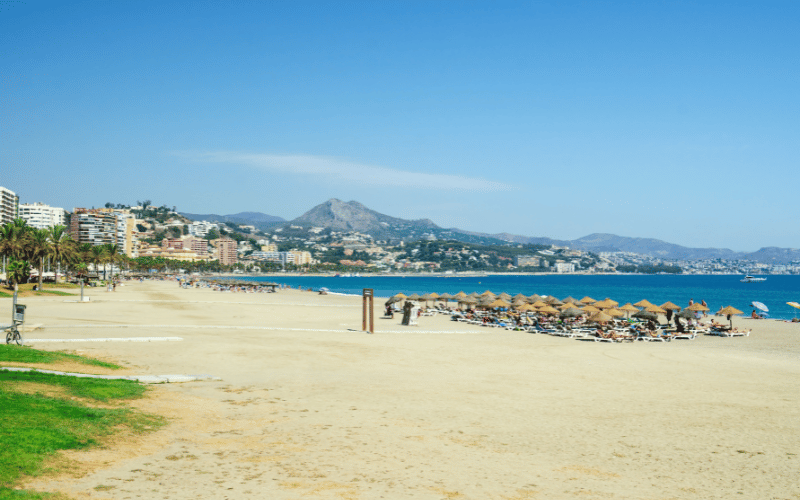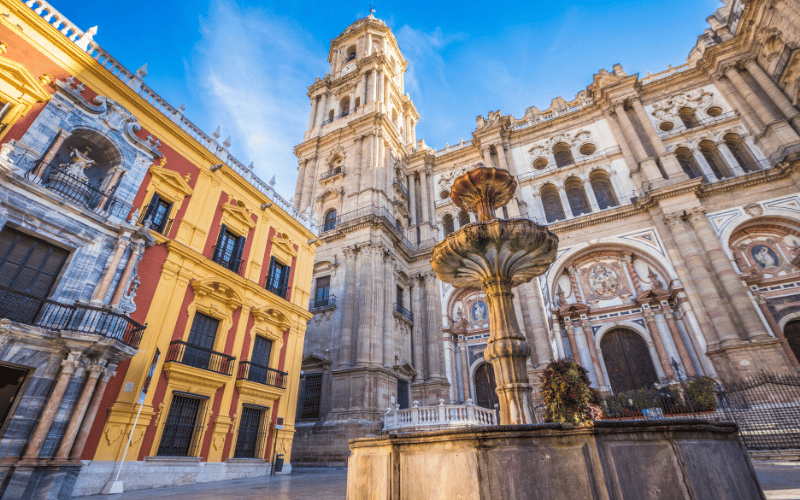
Spotlight On Spain: Malaga
Expat Tips
Published: 26 July 2023 20:36 CET
Updated: 25 March 2025 20:38 CET
Malaga, a captivating city nestled within the autonomous community of Andalusia, Spain, is a hub of history and culture. With a remarkable past spanning over 2,800 years, the city's origins can be traced back to the Phoenicians. Throughout its history, Malaga has been shaped by various civilisations, including the Romans, Moors, and Christian kingdoms, leaving behind a rich cultural heritage. Today, it stands as one of the most attractive destinations for those living in Malaga or considering a move to the Costa del Sol.
Situated along the picturesque Costa del Sol in southern Spain, Malaga is nestled between the provinces of Granada and Cadiz, and to the north it shares its borders with the provinces of Cordoba and Seville.
Malaga boasts a coastline adorned with beautiful beaches, inviting locals, expats, and tourists alike to enjoy the sun, sea, and sand. Equally enticing is the city's culinary scene, with a focus on seafood, traditional Andalusian dishes, and delightful tapas. The local street markets and eateries exude a vibrant gastronomic culture that delights the palate of every visitor.
Throughout the year, Malaga hosts an array of festivals and events that celebrate its cultural identity. The Holy Week (Semana Santa) processions, the lively Feria de Malaga (Malaga Fair), and the August Fair are some of the most cherished and vibrant celebrations in the city.
Malaga's international airport ensures excellent connectivity for travellers worldwide, making it a convenient destination to visit. Within the city, a well-developed public transportation system simplifies travel, allowing visitors and residents to explore the city's many attractions with ease.
Population of Malaga by Nationality
Malaga has been experiencing a notable increase in its population, with foreign immigration being the primary driver of this growth. In the past year alone, the province has gained 20,652 inhabitants, and a significant 64% of this increase, amounting to 13,302 individuals, can be attributed to foreign nationals moving to the area. This influx of foreign residents has contributed to making Malaga one of the most cosmopolitan regions in Spain, with 16.7% of its total population being of foreign origin—well above the national average of 11.6%. This makes the city particularly attractive for those researching the Malaga expat lifestyle or considering moving to Malaga.
While foreign immigration plays a crucial role, internal migration from other parts of Spain has also boosted population growth. The province's ability to attract newcomers from both within Spain and abroad has compensated for a declining natural birth rate and an ageing population.
Among the foreign communities, the British population stands out as the largest group. In 2021, the British community grew by 2,278 registered residents. Over the past four years, the British community in Malaga province has increased by more than 9,000 residents. This growth aligns with wider patterns of British expats in Malaga seeking a Mediterranean lifestyle.
The Ukrainian community has also seen remarkable growth, expanding by nearly 50% over the past decade. Meanwhile, some communities such as Romanian, Chinese, Nigerian, Bulgarian, and Bolivian residents decreased slightly.
Brexit motivated many British residents to formalise their residency status in Spain, which led to a notable rise in registrations after 2020.
Looking at the largest foreign communities, the British remain the most numerous, followed by Moroccans, Italians, Ukrainians, Romanians, Germans, Colombians, Argentineans, Chinese, and Russians. This wide demographic diversity enriches Malaga’s cultural landscape.
Weather and climate
Malaga is renowned for its pleasant Mediterranean climate characterised by hot, dry summers and mild winters. These conditions make it a favourite destination for anyone seeking reliable sunshine, particularly those researching Malaga weather by month or Costa del Sol climate.
Spring in Malaga
Spring is warm, with average temperatures rising from 16°C–20°C (March) to 20°C–24°C (May).
Summer in Malaga
Summer temperatures range from 22°C–27°C in June, reaching 24°C–30°C in July and August. Heatwaves can push temperatures beyond these averages.

Autumn in Malaga
September stays warm at 22°C–27°C, cooling gradually in October and November.
Winter in Malaga
Winters are mild, with temperatures between 14°C and 19°C, among the warmest winter climates in Europe.
Annual climate
Malaga’s average annual temperature is 18°C, with around 500 mm of annual rainfall.
Transportation
Transportation in Malaga is well-developed, offering an efficient and diverse network for residents and tourists. This makes daily life easier for expats living in Malaga and contributes to the city’s reputation for high quality of life.

Image Credit: Adrianna Calvo, CC0, via Wikimedia Commons
Metro system
The two-line metro connects central Malaga to western and south-western districts.
Buses
Malaga’s extensive bus system connects the city centre with all neighbourhoods and operates from early morning until late at night.
Local trains
The Cercanías rail service connects Malaga with coastal towns like Fuengirola and inland areas including the Guadalhorce valley.
Cycling and bike hire
Bike-sharing and rental services are widely available, offering sustainable transport options.
Airport access
Malaga Airport offers extensive domestic and international routes, making the city highly accessible.
Places to Visit
Historical landmarks
- Alcazaba: A Moorish fortress overlooking the city.
- Roman Theatre: Located at the foot of the Alcazaba.
- Gibralfaro Castle: Offering panoramic views of Malaga.
Museums and culture
- Picasso Museum: Celebrating Malaga’s most famous artist.
- Malaga Cathedral: Known as “La Manquita”.
- Teatro Romano Málaga: The oldest monument in the city.
Beaches
- La Malagueta Beach: The city’s central beach.
Parks and outdoor spaces
- Malaga Park: A lush botanical walkway.
- Muelle Uno: A modern waterfront promenade.
- Atarazanas Market: A bustling indoor food market.

Malaga Universities
There is only one university in Malaga: the Universidad de Málaga.
Universidad de Málaga (UMA) is a prominent public university established in 1972. It ranks 23rd among Spanish universities and offers a wide selection of degrees across arts, sciences, engineering, health sciences, and social sciences.
Academic activity is spread across 18 centres and 81 departments. UMA also attracts a growing number of international students each year, contributing to Malaga’s reputation as a global study destination.
Conclusion
In conclusion, living in Malaga offers a blend of rich cultural heritage, warm Mediterranean weather, excellent transport links, and a thriving modern lifestyle. Its cosmopolitan population, international airport, strong university, and beautiful coastline make it a highly desirable location for travellers, families, retirees, and foreign residents alike.
Whether enjoying traditional cuisine, strolling through historic streets, or relaxing on the beaches, Malaga remains one of Spain’s most inviting cities for both short-term visits and long-term stays.
For trusted private health cover while living in or moving to Malaga, visit the HealthPlanSpain homepage.



















